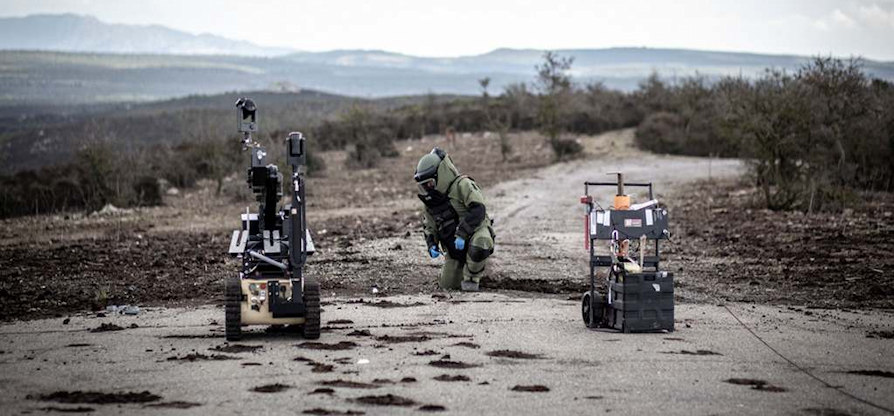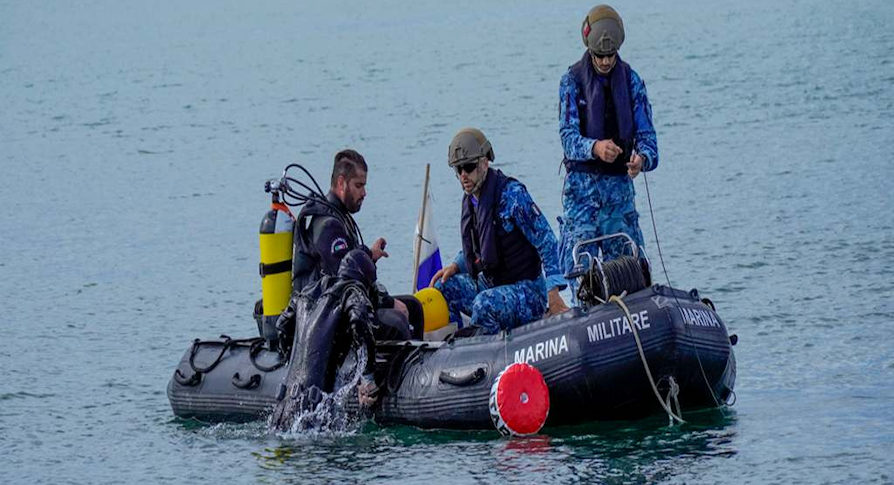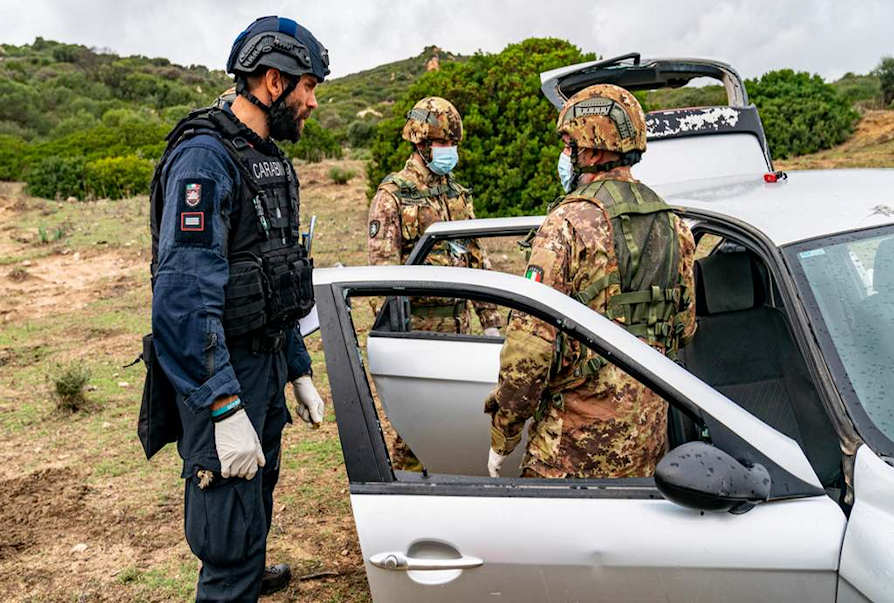The multinational exercise took place in Sardinia from 24 October to 5 November Bison Counter 2021. Numerous Teams from Europe and the United States have trained in the activities Counter-Improvised Explosive Devices (C-IED).
L'Officer Conducting the Exercise (OCE) was identified in the division commander Vittorio Veneto of Florence, while theOfficer Directing the Exercise (ODE) was the commander of the cavalry brigade Pozzuolo del Friuli (member of the Italian Army of the Projection Force from the Sea), Brigadier General Filippo Gabriele.
The departments of the latter large unit have integrated the C-IED capabilities of the Italian Navy (Diving and Inshore Command - Diving Operations Group and marine brigade Saint Mark), of the Italian Air Force (3°, 16th and 17th° flock e Intelligence Survallance Reconnaissance using an MQ-1C aircraft Predator), Arma dei Carabinieri (13th regiment) and foreign assets, organizing an international C-IED task force in which projects such as the Joint Deployable Exploitation and Analysis Laboratory (JDEAL) of the EDA (European Defense Agency), staff coming from European Center for Manual Neutralization Capabilities (ECMAN) and staff of the Military Search Capability Building (MSCB).
The commander of the Pozzuolo del Friuli he made himself available to some questions about the event.

General Gabriele, can you describe the importance of the BISON COUNTER 21 and the exercises that take place?
“Bison Counter 21” is the largest and most relevant Counter - Improvised Explosive Device (C - IED) exercise in Europe and is organized under the aegis of the European Defense Agency (EDA). The exercise involved more than 650 military C - IED experts. Italy hosted the 2021 edition, fielding the assets of the Army, Navy, Air Force and Arma dei Carabinieri, and conducted in full compliance with the rules for containing Covid and with particular attention to environmental protection.
The “Bison Counter 21” makes it possible to evaluate the effectiveness of current C - IED tactics, techniques and procedures in the light of the continuous technological evolution of IEDs and to implement new contrast measures in a shared manner.
The purpose of the exercise was to test the technical specifications of each component used, organized in such a way as to allow adequate integration of forces and the training of personnel with the necessary realism, in order to improve the conditions for sharing information. , lessons learned and integration between the assets of the participating nations.
The exercise saw as Officer Scheduling the Exercise (OSE) or the commander in charge of the planning phase, the commander of the Northern Army Operational Forces, who appointed as Officer Conducting the Exercise (OCE) or the manager of the planning phase and conducted the commander of the "Vittorio Veneto" division of Florence, who in turn appointed the commander of the "Pozzuolo del Friuli" cavalry brigade, as Officer Directing the Exercise (ODE), with the task of supporting the activity of the OCE as part of detailed planning, exercise execution and logistical support.
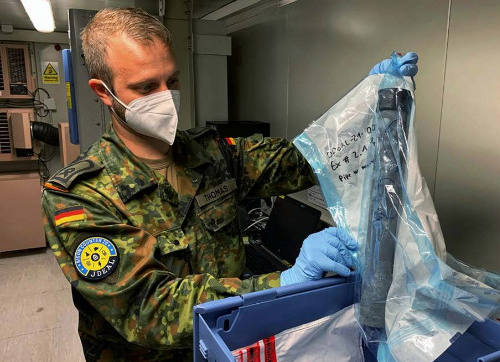 10 European countries participate. Are the preparation and skills homogeneous or can we teach our colleagues something?
10 European countries participate. Are the preparation and skills homogeneous or can we teach our colleagues something?
The “Bison Counter 21” involved ten member states of the European Union: Austria, Belgium, Czech Republic, France, Germany, Hungary, Italy, Slovenia, Spain and Sweden and two partner states, Norway and the United States.
Drills such as the “Bison Counter 21” are unique opportunities to test, train and improve interoperability between various actors in a complex and realistic operational environment, across the spectrum of military operations. The event therefore represents a rare opportunity, outside the real operational contexts, to increase professional training and integration between operators as well as a moment of discussion on procedural techniques and equipment.
In this context, I find that it was an effective solution to have set up "mixed" task units, each of which made up of specialists from different countries, in order to test and optimize the different approaches "in the field", during research, threat neutralization and IED incident management.
Surely the presence of professionalism from all over Europe of the highest level contributes to considerably increasing mutual knowledge of the respective skills and techniques of approach to the IED.
And learn? In terms of procedures or individual equipment ...
As mentioned, in this sense, the different experiences of both National and Foreign Armed Forces in this sector, matured in the individual areas of relevance, represent an enrichment for everyone. Even in the presence, as is normal, of some peculiarities, I must say that the level of specialization expressed by the participants was generally very high.
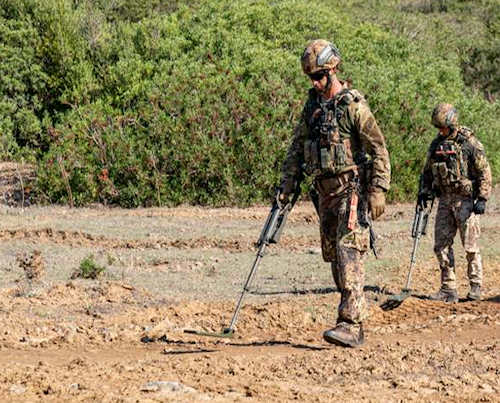 Are FDI still the main asymmetric threat after Afghanistan?
Are FDI still the main asymmetric threat after Afghanistan?
The threat posed by IEDs is high in many theaters of operations and represents a constant challenge to any operation. In order to deal with this threat, the Armed Forces of the Member States not only need to have the required highly technical skills and capabilities, but they must also interact with each other smoothly and efficiently when operating in joint missions and operations.
To counter this threat, capabilities expressed by the Joint Deploable Exploitation and Analysis Laboratory (JDEAL), the European Center for Manual Neautralization (ECMAN) and the Military Search Capability Building (MSCB) were also employed in the "Bison Counter 21" Europeans which, thanks to their high specialization, play a fundamental role in the fight against IED threats.
Our constant training, the procurement of new research tools, new approach techniques and the professionalism of all human components are still essential today so that the threat posed by IEDs is mitigated to the maximum of our possibilities.
